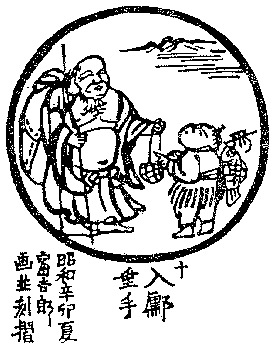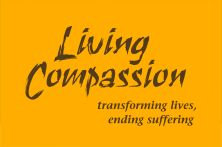November 2025 Musings
10. In The World
Barefooted and naked of breast,
I mingle with the people of the world.
My clothes are ragged and dust-laden,
and I am ever blissful.
I use no magic to extend my life;
Now, before me, the dead trees become alive.
If we encountered the oxherd in his ragged and dust-laden clothes, would we recognize an enlightened being?
The radiance of the Buddha was apparently unmistakable. In a famous and often misquoted exchange, Dona, a priest, struck by the Buddha’s luminous presence, wonders if he is celestial, supernatural or human. The Buddha leaves him with a simple, “Remember me as awakened.”
All seekers express curiosity about what distinguishes someone who is awake from someone who isn’t. Obligingly, religious texts lay out lists of attributes that are “enlightened qualities”—patience, tolerance, humility, equanimity, detachment, generosity, compassion, spontaneity, wisdom, cleanliness, egolessness, centered in Self, and many, many more. But reading these lists only seems to reinforce the belief that there is a great distance we still have to travel before becoming blissfully awake.
As we are constantly reminded by Practice, focusing on what-I-am-not never leads to a realization of who-I-am. This is perhaps what the ox-herder means when he says “the dead trees become alive.” Through the presence of pure attention, the “dead” mental concept of a tree comes alive as the living, autumnal beauty of a Japanese maple. When the idea of awakening is surrendered, we are finally practicing being present to Presence.
From of old there were not two paths;
"Those who have arrived" all walked the same road.
-Anthology of Phrases for the Zen Forest
The ox-herding pictures are laid out sequentially: one encounters Practice, labors against the mind, transcends struggle, arrives at a state of bliss from which one emerges to interact in the world, bliss intact! As practitioners who live in the world, we have the more difficult task of finding the bliss of being in a busy world that thrives on egocentricity. In fact, when an encounter with someone or something drops us into the hell of intense ego-identification, the voices never fail to remind us of how challenging it is to practice awareness. We are all familiar with its quit-practicing campaign: “It’s too hard. I can’t do this. What’s the point? Is it really worth it? It doesn’t work.”
Here’s an exchange between Nisargadatta Maharaj and someone complaining of the difficulty of spiritual practice.
M: It is not a matter of easy, or difficult. You have no alternative. Either you try or you don't. It is up to you.
Q: I have tried many times and failed.
M: Try again. If you keep on trying, something may happen. But if you don't, you are stuck. You may know all the right words, quote the scriptures, be brilliant in your discussions and yet remain a bag of bones. Or you may be inconspicuous and humble, an insignificant person altogether, yet glowing with loving kindness and deep wisdom.
We don’t practice to awaken. We practice to be aware.
Awareness expands our “self-image” from a limited “me” to indescribable Being.
Rather than idealizing an elusive state of bliss, perhaps we can begin to pay homage to the wisdom arising from devotion to Practice. When the focus of attention is not on a conversation evaluating how “awake” I am or am not (or whatever the voices are yammering on about), isn’t there respect, compassion and lovingkindness for the barefoot beggar at the street corner? As long as we are focused on being a person, we fail to recognize the Buddha before us. Isn’t it time to recognize ourselves as not a person but as the Buddha? Wei Wu Wei:
Do you realise that when you give a shilling to a beggar you are giving it to yourself? Do you realise that when you help a dog over a stile you yourself are being helped? Do you realise when you kick a man when he is down, you are kicking yourself? Give him another kick, you deserve it!
And so as we come to the tenth and final ox-herding picture, let’s mingle with the people of the world, alive to the vitality of the Intelligence That Animates, arising as the love and wisdom of our beautiful hearts!
Gasshō
ashwini
Audio of this month's Musings:
Download (right-click to download)
Subscribe to the audio version of Musings as you would any podcast. Add this feed URL to your podcast app:
https://www.livingcompassion.org/feed/musings/podcast-feed.rss
